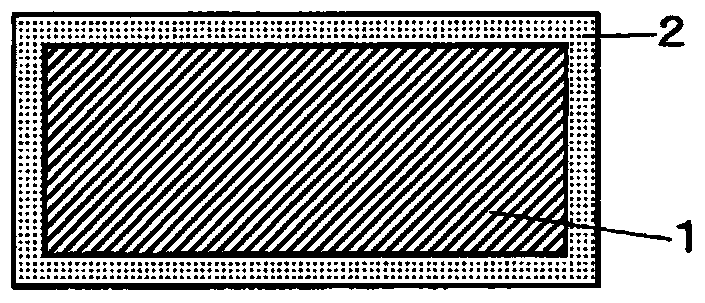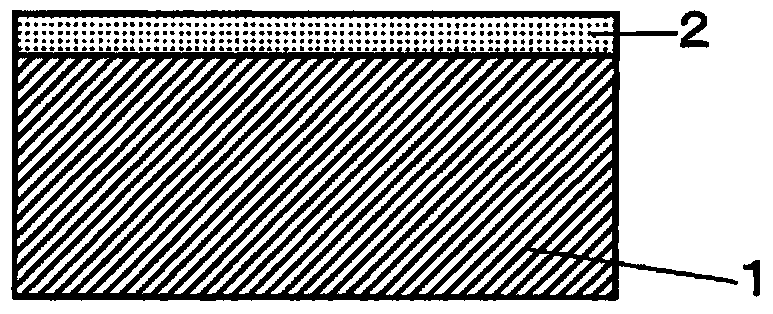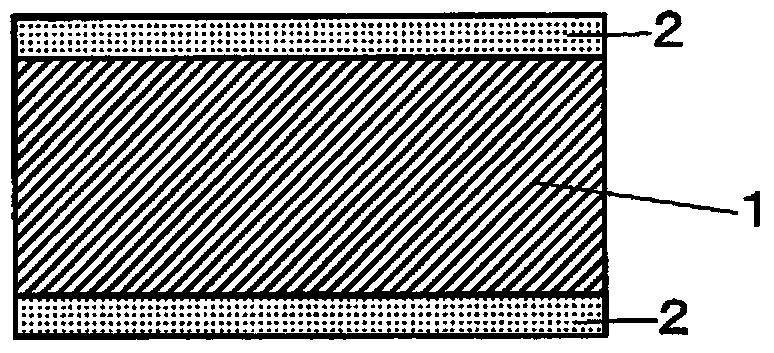Resin foam and production method therefor
A resin foam, foam forming technology, applied in the direction of chemical instruments and methods, synthetic resin layered products, packaging items, etc., can solve the problems of deterioration, reduced sealing, weak strength, etc., and achieve excellent deformation recovery , The effect of less shrinkage of the bubble structure and less shrinkage of the bubble structure
- Summary
- Abstract
- Description
- Claims
- Application Information
AI Technical Summary
Problems solved by technology
Method used
Image
Examples
Embodiment 1)
[0147] Acrylic elastomer composed of butyl acrylate: 85 parts by weight, acrylonitrile: 15 parts by weight, and acrylic acid: 6 parts by weight (acrylic acid: 5.67 wt%, weight average molecular weight (polystyrene conversion molecular weight): 2.17 million, vitrified Transition temperature: -20°C): 100 parts by weight, as an active energy ray-curable compound, polypropylene glycol diacrylate (bifunctional acrylate, trade name "ARONIX M270", manufactured by Toagosei Co., Ltd., glass transition temperature:- 32°C): 45 parts by weight, trimethylolpropane trimethacrylate (trifunctional acrylate, trade name "NK ESTER TMPT", as an active energy ray curable compound), manufactured and manufactured by Shin Nakamura Chemical Industry Co., Ltd. Glass transition temperature in homopolymer: 250°C or higher): 30 parts by weight, as inorganic particles, magnesium hydroxide (trade name "EP1-A", manufactured by Kamishima Chemical Industry Co., Ltd.): 50 parts by weight, as elasticity Hexamethy...
Embodiment 2)
[0154] Acrylic elastomer composed of butyl acrylate: 85 parts by weight, acrylonitrile: 15 parts by weight, and acrylic acid: 6 parts by weight (acrylic acid: 5.67 wt%, weight average molecular weight (polystyrene conversion molecular weight): 2.17 million, vitrified Transition temperature: -20°C): 100 parts by weight, as an active energy ray-curable compound, polypropylene glycol diacrylate (bifunctional acrylate, trade name "ARONIX M270", manufactured by Toagosei Co., Ltd., glass transition temperature:- 32°C): 30 parts by weight, trimethylolpropane trimethacrylate (trifunctional acrylate, trade name "NK ESTER TMPT", as an active energy ray curable compound, manufactured and manufactured by Shin Nakamura Chemical Industry Co., Ltd.) Glass transition temperature when homopolymer: 250°C or higher): 45 parts by weight, magnesium hydroxide as inorganic particles (trade name "EP1-A", manufactured by Kamishima Chemical Industry Co., Ltd.): 50 parts by weight, as Hexamethylene diami...
Embodiment 3)
[0161] Acrylic elastomer composed of butyl acrylate: 85 parts by weight, acrylonitrile: 15 parts by weight, and acrylic acid: 6 parts by weight (acrylic acid: 5.67 wt%, weight average molecular weight (polystyrene conversion molecular weight): 2.17 million, vitrified Transition temperature: -20°C): 100 parts by weight, ethoxylated bisphenol A diacrylate (a bifunctional acrylate, trade name "A-BPE30"," Shin Nakamura Chemical Industry Co., Ltd.) as an active energy ray curable compound Glass transition temperature at the time of manufacture and homopolymer: 250°C or higher): 30 parts by weight, as active energy ray curable compound trimethylolpropane trimethacrylate (trifunctional acrylate, trade name " "NK ESTER TMPT", manufactured by Shinnakamura Chemical Industry Co., Ltd., glass transition temperature when homopolymer is made: 250°C or more): 45 parts by weight, magnesium hydroxide as inorganic particles (trade name "EP1-A" , Kamishima Chemical Industry Co., Ltd.): 50 parts b...
PUM
| Property | Measurement | Unit |
|---|---|---|
| glass transition temperature | aaaaa | aaaaa |
| critical temperature | aaaaa | aaaaa |
| critical pressure | aaaaa | aaaaa |
Abstract
Description
Claims
Application Information
 Login to View More
Login to View More - R&D Engineer
- R&D Manager
- IP Professional
- Industry Leading Data Capabilities
- Powerful AI technology
- Patent DNA Extraction
Browse by: Latest US Patents, China's latest patents, Technical Efficacy Thesaurus, Application Domain, Technology Topic, Popular Technical Reports.
© 2024 PatSnap. All rights reserved.Legal|Privacy policy|Modern Slavery Act Transparency Statement|Sitemap|About US| Contact US: help@patsnap.com










